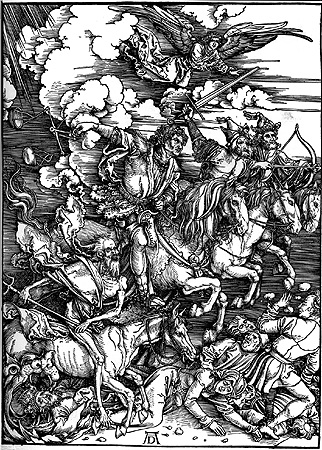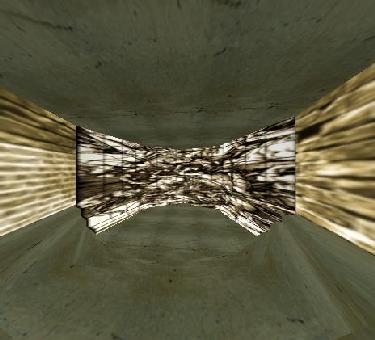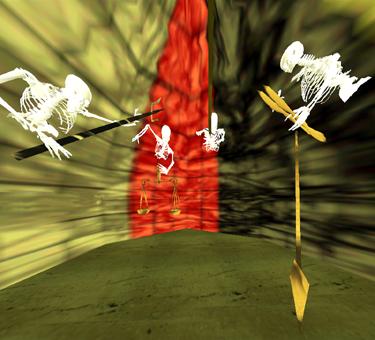
- the Four Horsemen -



Revelation 6:
"(1) And I saw when the Lamb opened the first of the seven seals; and I heard
first of the four living beasts call out in a voice as of thunder: Come.
(2) And I looked, and behold, a white horse, and the one who rode it held
a bow, and a crown was being given to him. Thereupon he proceeded from victory
to victory. (3) And when he opened the second seal, I heard the second living
beast say: Come. (4) And there appeared another, a horse red as fire. The one
who rode him was granted the power to take peace out of the world, so that they
shall kill each other, and he was given a great sword. (5) And when he opened
the third seal, I heard the third beast say: Come. And I looked, and behold, a
black horse, and the one who rode it held a balance in his hand. (7) And when he
opened the fourth seal, I heard the fourth beast call out: Come. (8) And I
looked, and behold, a pale horse, and the one who rode it, his name is Death,
and in his entourage was the land of the dead. And he was given power over one
quarter of earth to kill by the sword and hunger, by pestilence and the wild
beasts of the earth."

Background:
In this, the most famous and ever popular sheet of Durer's Apocalypse,
the artist achieves a phenomenal sense of movement as the Four Horsemen
vie with each other to ride out and bring destruction to earth. It is
this scene which has served to modify the original meaning of the Greek
apokalypsis, i.e., "revelation," adding the sense of "impending doom."
It is clear that Durer in this woodcut refines his mastery of three-dimensional representation. The opening of the seals is omitted. The horses have almost human eyes, and are not yet of the Italian type found in Durer's later works. No attempt is made to render the difference in color of the animals, as the text has it. Also, their rear parts are not shown.

Interpretation:
The representation of this woodcut in the Cave is as follows. The user
enters an empty space which resembles a theater. When approaching the "stage", the
walls start to slowly close in on the user
as the woodcut materializes into 3D.
The walls turn into the four colors, red, white, black, and pale as they move.
The riders of the three horses, with the exception of the pale horse and his rider Death,
come to life in 3D with violent motions. As the walls close in, the fourth figure
of death and his pale horse comes in from
the right side of the room. Fragments from Wagner's opera
Siegfried violently burst unto the scene. The piece is intended
to translate the horror of the woodcut into something more tangible and
real for our modern times.
